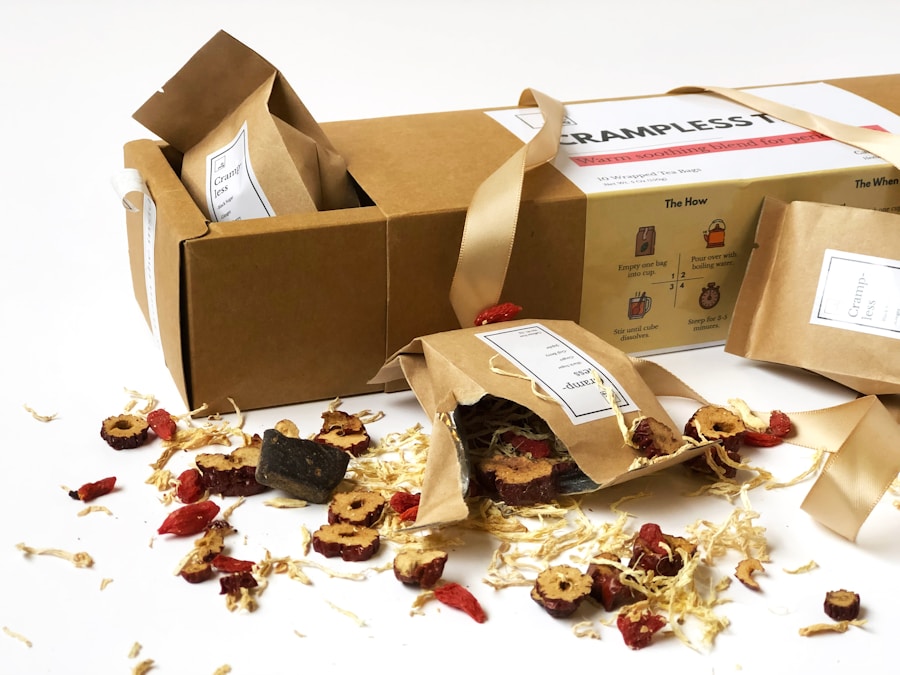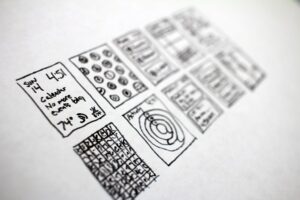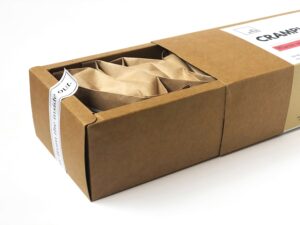In the world of packaging, the method of printing you choose can significantly impact not only the aesthetics of your product but also its marketability and functionality. As you navigate through various options, understanding the different packaging printing methods available is crucial. Each technique offers unique advantages and is suited for specific applications, materials, and production volumes.
Whether you are a small business owner looking to create eye-catching labels or a large manufacturer needing high-volume packaging solutions, knowing the ins and outs of these methods will empower you to make informed decisions. The landscape of packaging printing has evolved dramatically over the years, driven by advancements in technology and changing consumer preferences. From traditional techniques that have stood the test of time to modern digital solutions that offer unparalleled flexibility, the choices can be overwhelming.
In this article, you will explore several prominent printing methods, each with its own set of characteristics, benefits, and ideal use cases. By the end, you will be better equipped to select the right printing method that aligns with your specific packaging needs.
Key Takeaways
- Packaging printing methods include flexographic, digital, lithographic, gravure, screen, and offset printing.
- Flexographic printing is ideal for high-volume production and can print on a variety of substrates.
- Digital printing offers quick turnaround times, customization, and variable data printing capabilities.
- Lithographic printing provides high-quality, consistent results for medium to large print runs.
- Gravure printing is best suited for long print runs and delivers high-quality, detailed images.
Flexographic Printing
Versatility in Materials
The versatility of flexographic printing allows it to work effectively on a range of materials, including plastic films, paper, and metallic surfaces.
Speed and Efficiency
If you are looking for a method that can handle large runs while maintaining consistent quality, flexographic printing may be an ideal choice for your packaging needs. One of the standout features of flexographic printing is its speed and efficiency. The process is designed for high-speed production, making it suitable for large-scale operations where time is of the essence.
Sustainability and Cost-Effectiveness
Additionally, flexographic printing supports a wide array of inks, including water-based, solvent-based, and UV-cured inks, which can enhance the sustainability of your packaging. As you consider this method, keep in mind that while it may require a higher initial investment for plate creation, the long-term benefits in terms of speed and cost-effectiveness can outweigh these upfront costs.
Digital Printing

Digital printing has revolutionized the packaging industry by offering unprecedented flexibility and customization options. Unlike traditional methods that rely on physical plates or screens, digital printing uses electronic files to directly transfer images onto packaging materials. This means you can easily make changes to designs without incurring significant costs or delays associated with plate changes.
If you are looking to produce short runs or personalized packaging, digital printing could be your go-to solution. One of the most appealing aspects of digital printing is its ability to produce high-quality images with vibrant colors and intricate details. This method is particularly advantageous for businesses that want to create unique packaging designs that stand out on store shelves.
Additionally, digital printing allows for variable data printing, enabling you to customize each package with different information or graphics. This capability can be especially useful for promotional campaigns or limited-edition products. As you explore digital printing options, consider how this method can enhance your brand’s identity and engage consumers in new ways.
Lithographic Printing
| Metrics | Value |
|---|---|
| Resolution | Up to 10,000 dpi |
| Plate Thickness | 0.15mm to 0.30mm |
| Color Capability | 4-color process (CMYK) |
| Substrate Types | Paper, cardboard, plastic, metal |
| Production Speed | Up to 16,000 sheets per hour |
Lithographic printing, often referred to as offset printing when used for packaging, is a time-tested method known for its exceptional image quality and versatility. This technique involves transferring ink from a plate to a rubber blanket and then onto the substrate. Lithography is particularly effective for producing high-quality graphics on paperboard and cardboard materials, making it a popular choice for folding cartons and premium packaging solutions.
One of the key advantages of lithographic printing is its ability to produce sharp images with fine details and smooth gradients. If your packaging design features intricate artwork or requires precise color matching, lithography may be the ideal method for you. Additionally, lithographic presses can handle large volumes efficiently, making it suitable for businesses looking to produce significant quantities of packaging materials.
However, it’s important to note that lithographic printing may not be as cost-effective for short runs compared to other methods like digital printing. As you weigh your options, consider how lithography’s strengths align with your specific project requirements.
Gravure Printing
Gravure printing is another high-quality method often used for large-scale production of flexible packaging materials such as pouches and wrappers. This technique utilizes engraved cylinders to transfer ink onto substrates, allowing for rich colors and fine details. If you are focused on producing high-quality images with consistent results over long runs, gravure printing could be an excellent fit for your packaging needs.
One of the standout features of gravure printing is its ability to produce vibrant colors and smooth gradients with remarkable precision. This makes it particularly well-suited for products that require eye-catching visuals to attract consumers’ attention. Additionally, gravure printing is highly efficient for long runs due to its fast production speeds and low ink consumption per unit.
However, it’s worth noting that gravure may involve higher setup costs compared to other methods like flexography or digital printing. As you consider gravure printing for your packaging projects, think about how its strengths can enhance your product’s appeal in a competitive market.
Screen Printing

Visual Impact and Versatility
One of the primary advantages of screen printing is its ability to create thick layers of ink, resulting in striking visuals that stand out. This method is especially popular for promotional items and specialty packaging where visual impact is crucial. Additionally, screen printing can accommodate a wide range of substrates and shapes, making it suitable for custom packaging solutions.
Production Considerations
However, it’s important to consider that screen printing may not be as efficient for large production runs compared to other methods like flexography or gravure. As you explore screen printing options, think about how this technique can help you achieve your desired aesthetic while meeting your production requirements.
Conclusion
Ultimately, screen printing offers a unique combination of visual appeal and versatility, making it a valuable option for businesses looking to create impactful packaging solutions.
Offset Printing
Offset printing is a widely used method in the packaging industry known for its high-quality output and efficiency in producing large volumes. Similar to lithography, offset printing involves transferring ink from a plate to a rubber blanket before applying it to the substrate. This technique is particularly effective for producing folding cartons and labels where precision and detail are paramount.
One of the key benefits of offset printing is its ability to produce consistent quality across large runs. If you are looking to maintain uniformity in color and design across multiple packages, offset printing can deliver exceptional results. Additionally, this method supports a variety of substrates and finishes, allowing you to customize your packaging according to your brand’s identity.
However, like lithography, offset printing may not be as cost-effective for short runs due to setup costs associated with plate creation. As you evaluate offset printing for your projects, consider how its strengths align with your production goals and budget constraints.
Choosing the Right Printing Method for Your Packaging Needs
Selecting the right printing method for your packaging needs involves careful consideration of several factors including production volume, material type, design complexity, and budget constraints. Each method discussed offers unique advantages that cater to different requirements; therefore, understanding these nuances will help you make an informed decision. Start by assessing your production volume—if you’re planning a large run of identical packages, methods like flexographic or gravure may be more suitable due to their efficiency at scale.
Conversely, if you’re focusing on short runs or customized designs, digital or screen printing could provide the flexibility you need without incurring excessive costs. Additionally, consider the materials you’ll be using; some methods work better with specific substrates than others. Next, think about your design requirements—if intricate graphics or high-quality images are essential for your brand identity, lithographic or offset printing might be more appropriate due to their superior image quality capabilities.
Finally, factor in your budget; while some methods may have higher initial costs due to setup or plate creation fees, they could offer long-term savings through efficiency in larger runs. By carefully evaluating these factors and understanding the strengths of each printing method available in the market today, you will be well-equipped to choose the right solution that meets both your immediate needs and long-term goals in packaging design and production.
If you’re interested in learning more about the best printing methods for packaging, be sure to check out the article on Blur & Co’s blog. They are experts in packaging design and can provide valuable insights on how to make your products stand out on the shelves. With their years of experience and dedication to quality, you can trust their recommendations for the most effective printing techniques for your packaging needs.
FAQs
What are the best printing methods for packaging?
The best printing methods for packaging include flexography, digital printing, offset printing, and gravure printing.
What is flexography printing?
Flexography printing is a popular method for printing packaging materials. It uses flexible relief plates and fast-drying inks to print on a variety of substrates such as paper, plastic, and metallic films.
What is digital printing?
Digital printing is a modern printing method that directly prints digital-based images onto a variety of substrates. It is known for its high-quality and quick turnaround time, making it suitable for short print runs and customization.
What is offset printing?
Offset printing is a traditional printing method that transfers ink from a plate to a rubber blanket and then onto the printing surface. It is commonly used for high-volume packaging production and offers consistent, high-quality results.
What is gravure printing?
Gravure printing is a high-speed, high-quality printing method that uses engraved cylinders to transfer ink onto the packaging material. It is often used for long print runs and produces sharp, detailed images.




